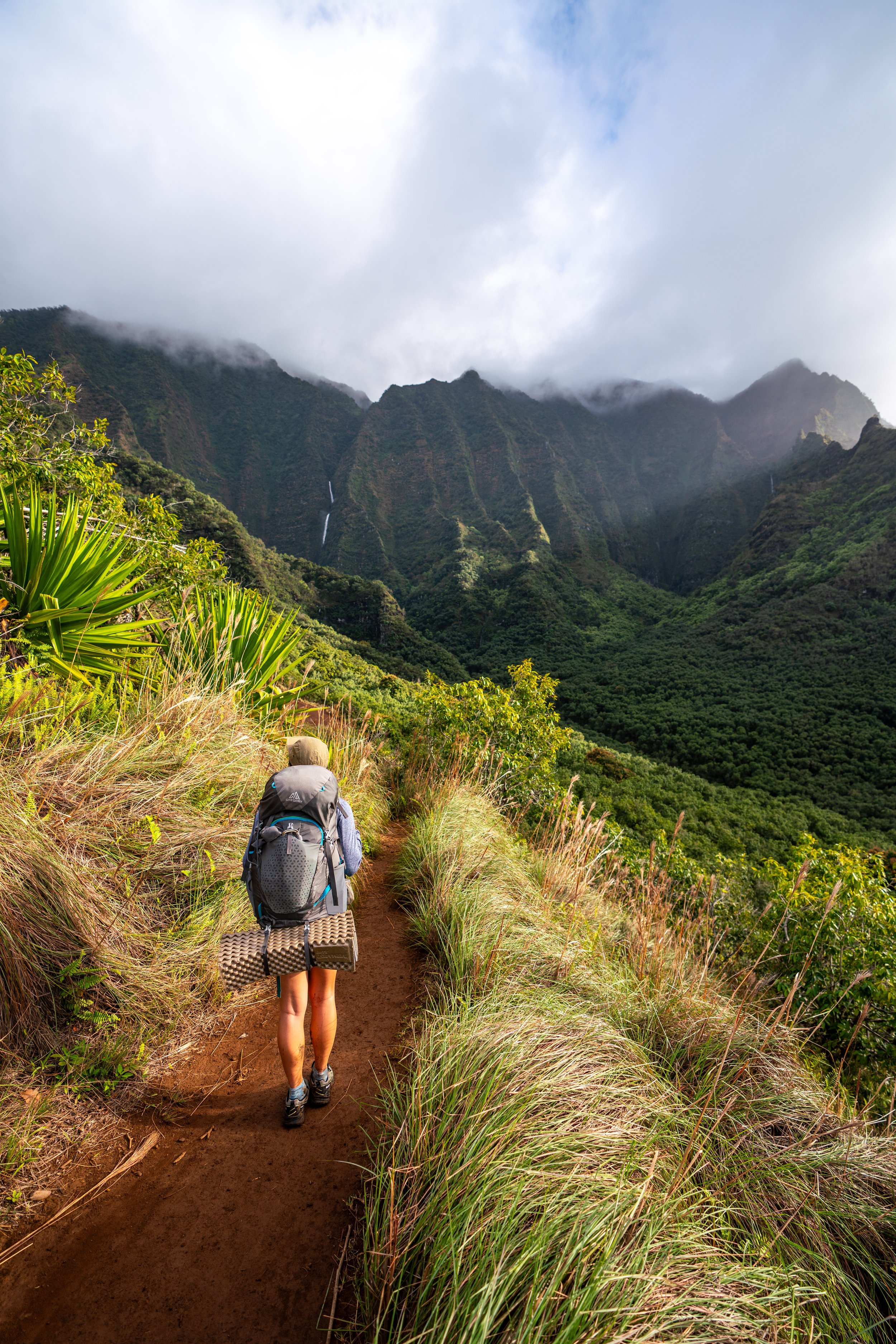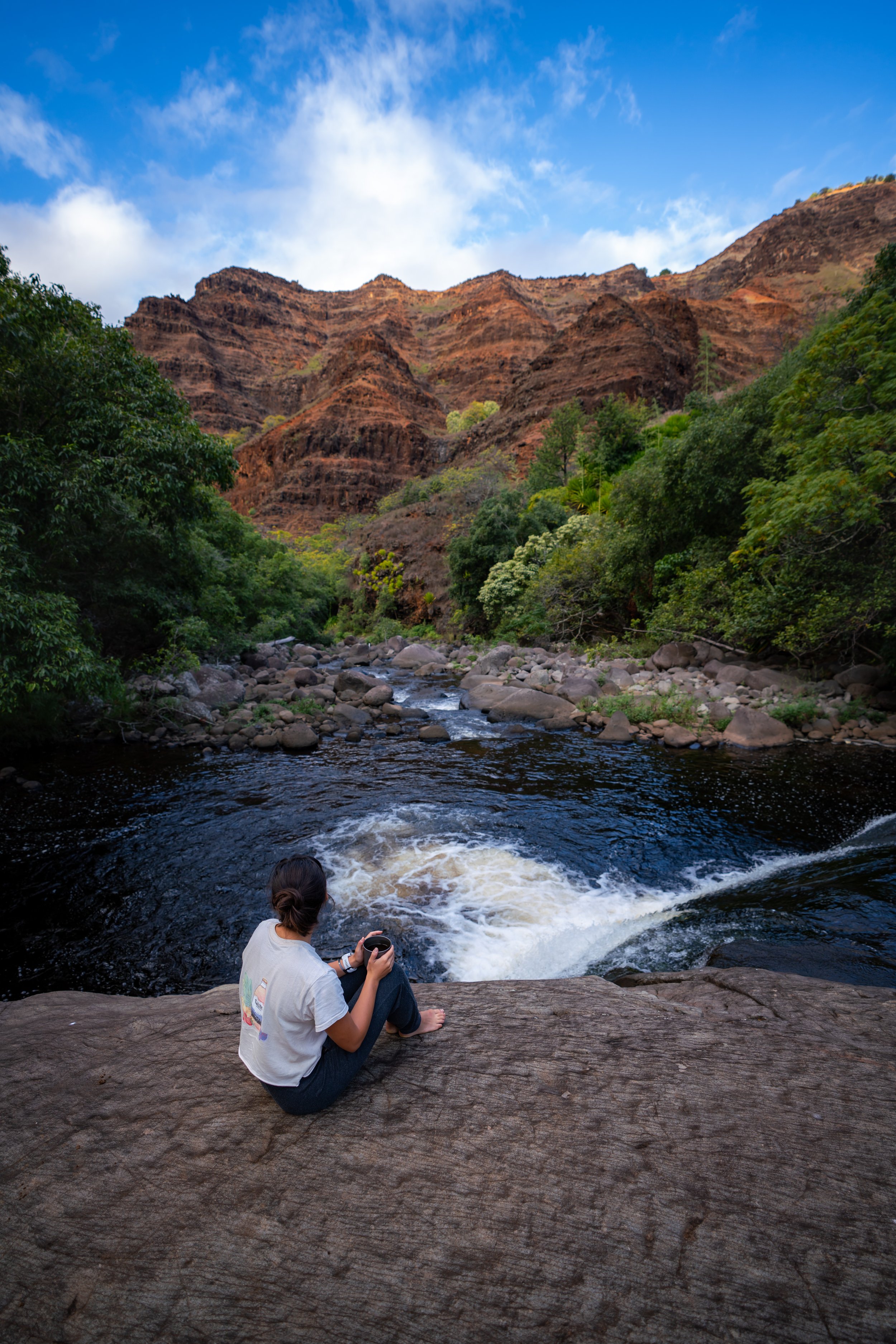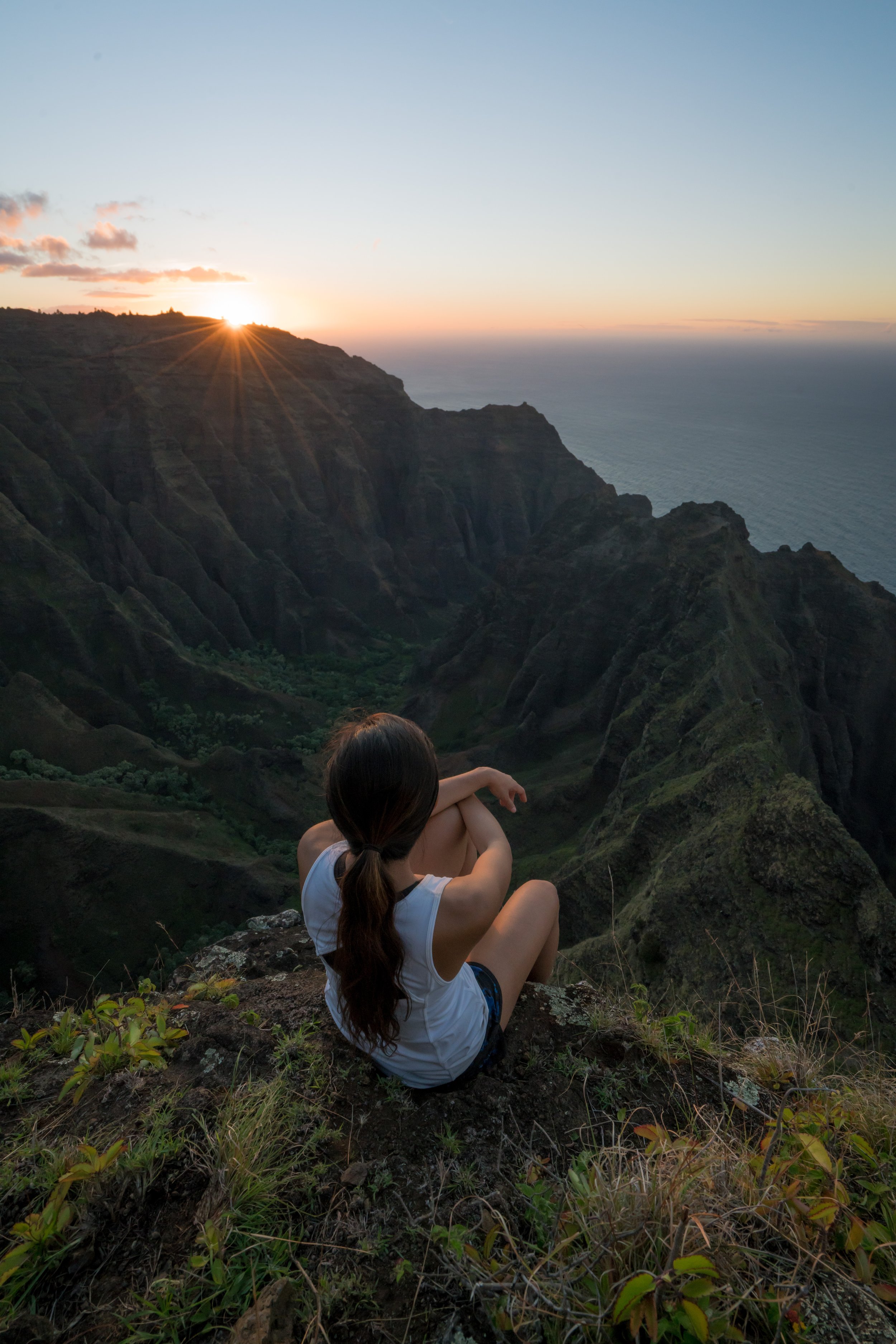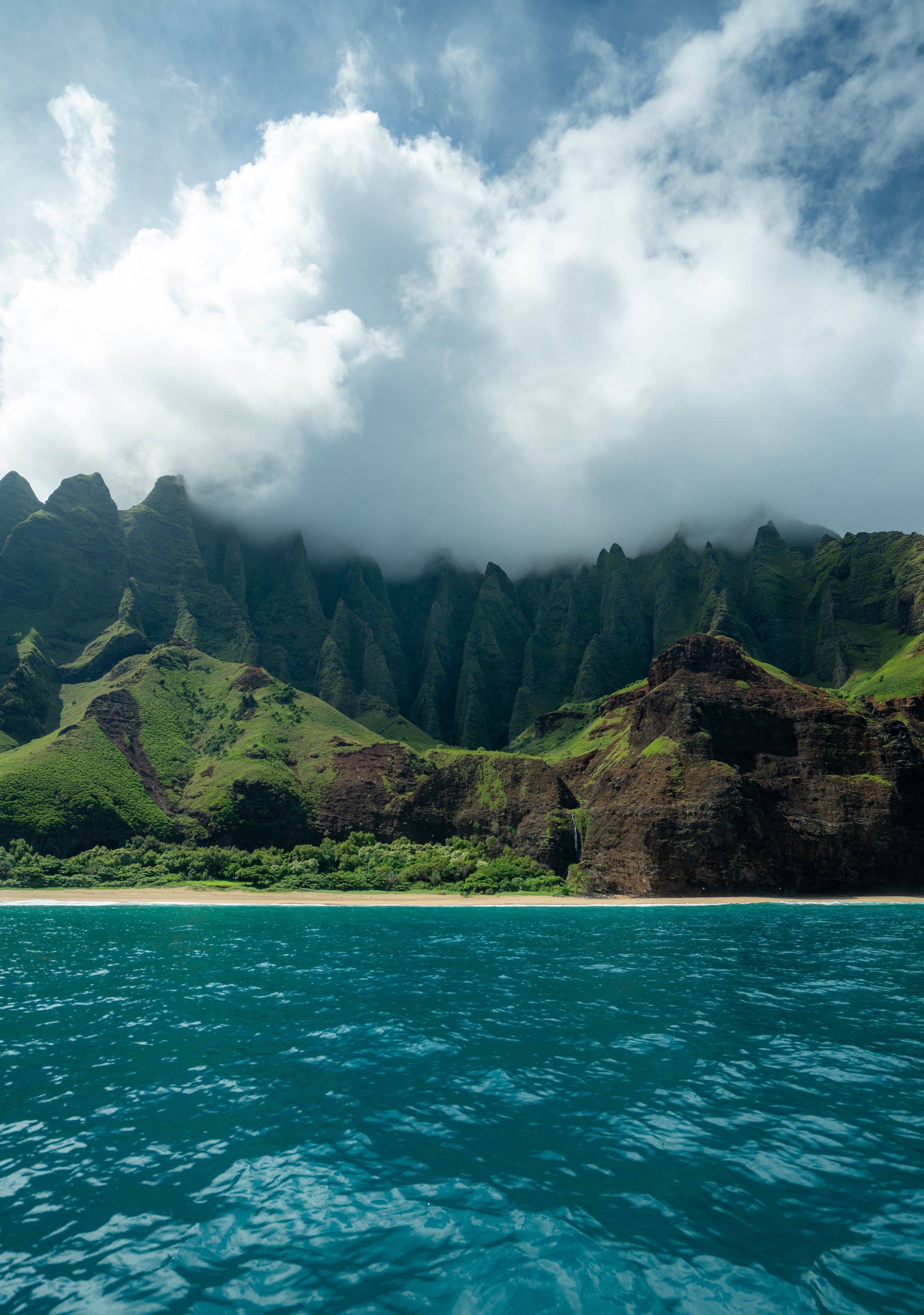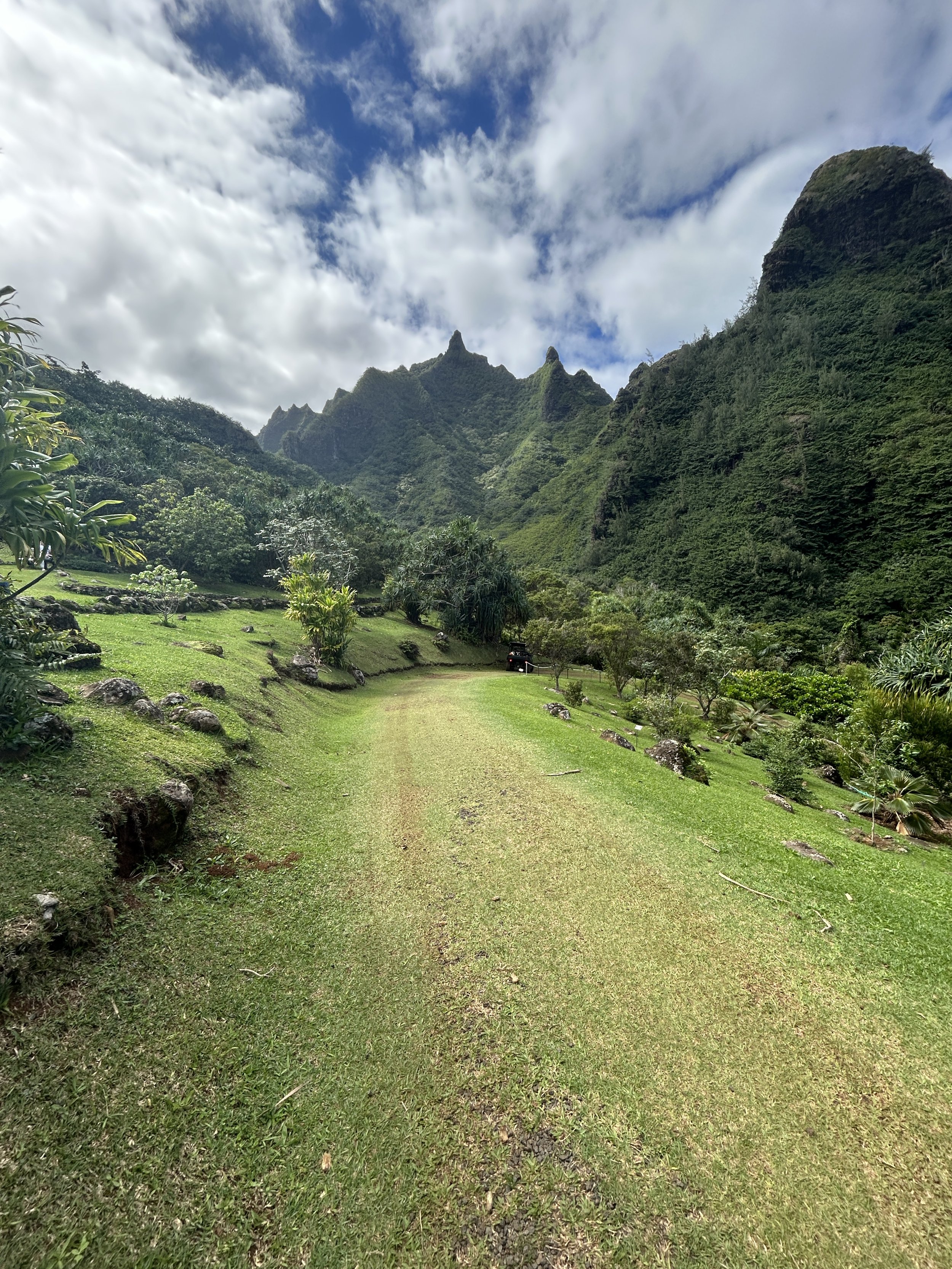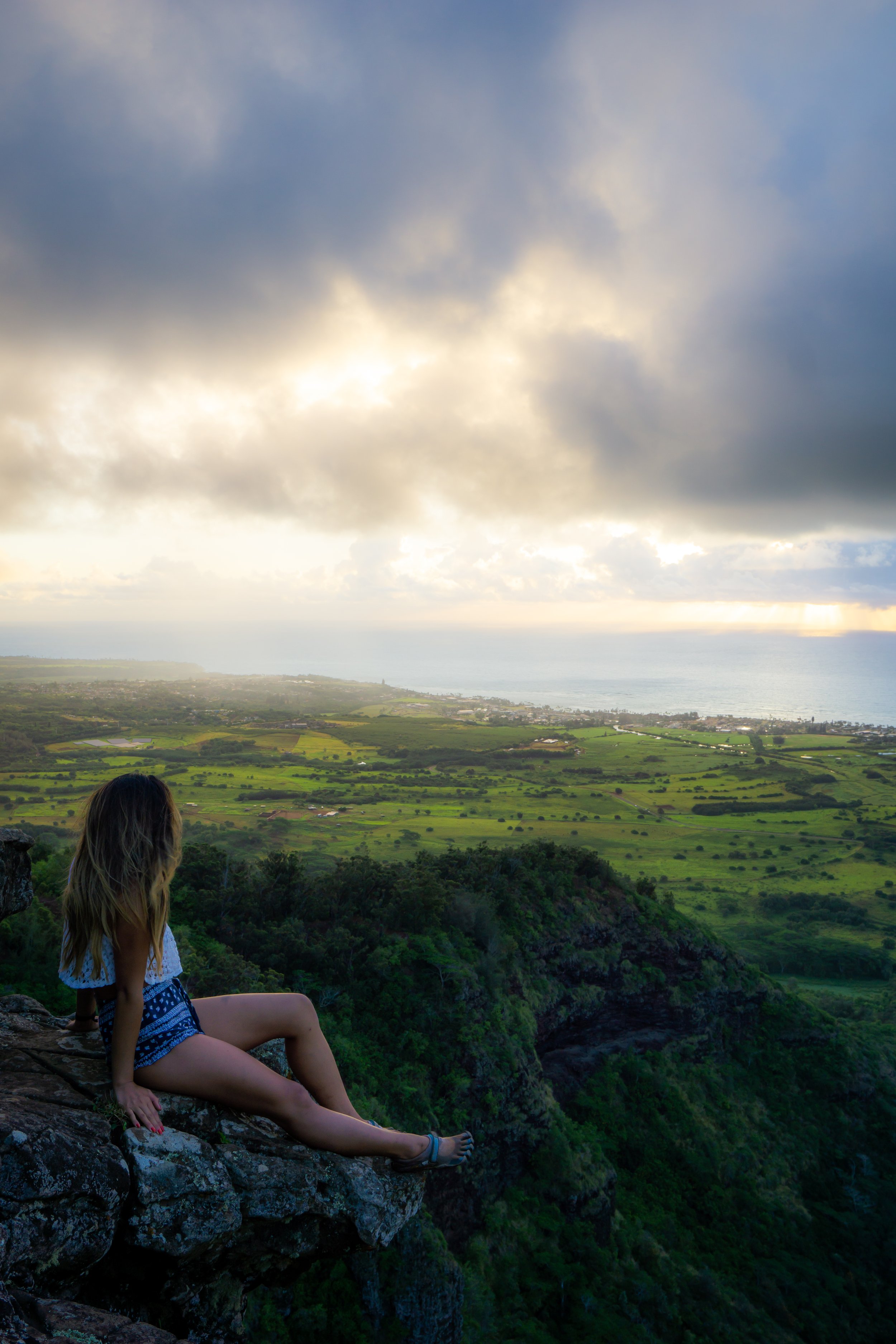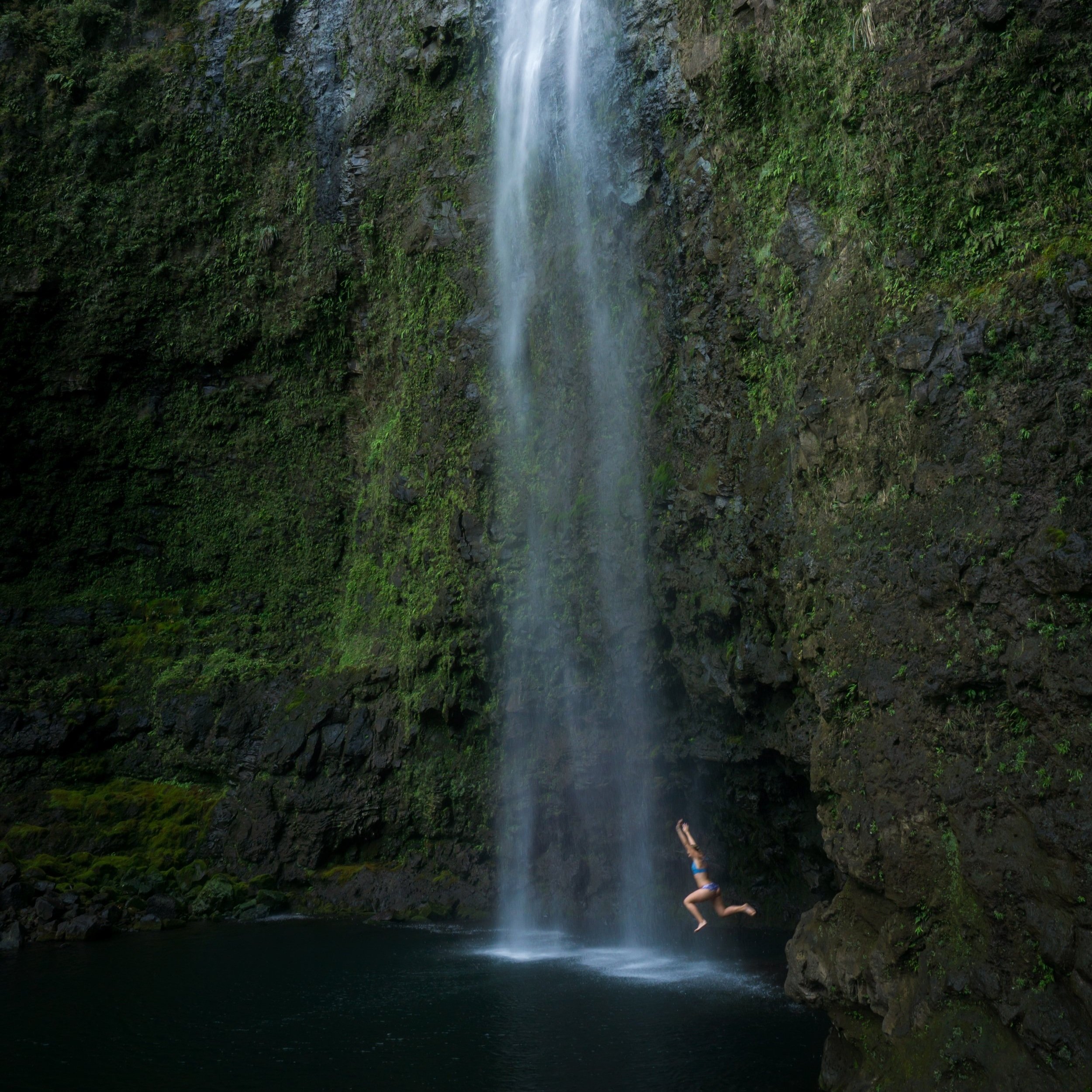Hiking the Weeping Wall aka Blue Hole (Mt. Waiʻaleʻale) on Kauaʻi, Hawaiʻi
Distance (Roundtrip): 6.2 miles / 10.0 km
The Weeping Wall Trail, commonly called Blue Hole or Mt. Waiʻaleʻale, is, without a doubt, one of the best and most beautiful waterfall hikes in the world!
I sincerely mean this, and if I had a top five list of the best hikes in the world, it would go Pēpēʻōpae, Awaʻawapuhi, the Kalalau Trail (Nāpali Coast), the Bear Creek Overlook, and the Weeping Wall!
That said, hiking into Blue Hole is not for the faint of heart. It’s a long, muddy, remote, and, needless-to-say, slippery trail that requires good navigational skills and, most importantly, good weather! Good weather cannot be understated!
Therefore, don’t use the distance above to estimate the amount of time that it will take to hike to the Weeping Wall. I have seen the hike take 1.5 hours each way, and I’ve seen it take 3 hours each way—both of which I would consider faster than most parties should plan for.
For this reason, if you are not familiar with Hawaiʻi gulch hiking, do not expect this hike to be a short adventure by any means. Meaning, it’s best to plan for a longer-than-3-hour hike each way.
However, those fortunate enough to make it to the Weeping Wall will be rewarded with a waterfall and an experience unlike anywhere else on the planet!
Weeping Wall Trailhead Parking
Parking for the Weeping Wall Trail is located at the very end of Loop Road (Kuamoʻo Road). This is the same road that leads to ʻOpaekaʻa Falls in Wailua.
That said, a high-clearance 4WD vehicle is needed to access the trailhead, as Loop Road crosses a stream three different times—not to mention that the drive gets very rough past the first stream crossing.
Finally, you will know you are at the trailhead when you reach a dirt parking area and an obvious dam where you cannot drive any further.
Google Maps Directions: Weeping Wall Trailhead
Hiking the Blue Hole Trail
When I can find the time and a good weather window, I have every intention of re-hiking the Weeping Wall Trail and updating this article.
That said, the Weeping Wall Trail begins on the right side of the Wailua River.
From here, the trail will follow the stream for the entire length of the trail, with countless crossings along the way.
In the first half of the hike, you will reach a waterfall, not the waterfall in the photo above. At this first waterfall, the Blue Hole Trail will continue up and around to the left.
Then, sometime after this first waterfall, the trail reaches an ungulate-exclusion fence, where you will go through a gate.
Next, after the second waterfall, shown above, there will be a series of hills until you finally see the Weeping Wall.
The hike may seem to drag on, but just know that the stream contours one huge bend in the mountains, meaning it will constantly curve to the left until you are at the base of Mt. Waiʻaleʻale (The Weeping Wall).
As mentioned previously, plan for a very long day. You should be driving to the trailhead shortly after sunrise, pack plenty of food and water for the hike, and factor in spending time at the Weeping Wall. I have never been driving away from the trailhead any earlier than an hour from sunset.
On a different note, hiking the Weeping Wall with one of the dry bags below may be one of the most important gear items for a hike like this, especially based on my description below.
Warning
The Weeping Wall is considered to be one of the wettest spots in the world, and you might get rained on the entire time. However, if it is coming down any more than a very light rain, I would caution against doing the hike. I have seen the worst possible outcome during a flash flood on a nearby trail.
To this point, checking nearby weather forecasts for Wailua and Kapaʻa generally won’t be accurate for the island’s interior. Therefore, I recommend using Mountain Forecast as your best source for weather information.
Ideally, you should look for a sunny day the day prior to your hike and the day of your hike to remain safe. This should ideally mean all parts of the island, not just where you might be at the time.
This is all to say, DO NOT ATTEMPT the Weeping Wall Trail if the stream appears to be flooding at any time during the drive-in or at the trailhead.
By this, I mean that you should be able to see and walk on the boulders in the stream, not only see water covering the entire stream bed.
I say this because Blue Hole is quite possibly the worst place you want to be during a flash flood, which is why I always look at Hawaiʻi gulch hiking as borrowed time. Therefore, enjoy the hike, enjoy the Weeping Wall, but be aware that you are entirely responsible for your own safety in such a remote location, as it’s very common to be the only hikers on the trail on any given day.
All said, do not expect to have cell phone service on any part of the trail, and rescue services will be limited if the conditions are too dangerous for help to arrive or if it’s getting dark out, as was the case when I tragically lost a friend in a nearby stream.



